
Goats, helicopter aerial saws, and chemical spraying drones are all instrumental in keeping your phone charged and your refrigerator running. These seemingly disparate things are a part of ComEd’s Integrated Vegetation Management (IVM) strategy, one way the energy company maintains best-in-class-reliability for customers. IVM is the targeted control and removal of unwanted plant matter through different applied methods. ComEd deploys teams to manage vegetation that may interfere with power lines or can pose a risk of power disruption.
“At ComEd, effectively managing vegetation around electric equipment reflects our commitment to reliably deliver electricity to our customers while promoting safety throughout our communities and treating the environment with care,” said Keith Frost, Senior Manager of Vegetation Management at ComEd. “We take pride in sustainable environmental practices and prioritize the health of our ecosystems while managing vegetation and invasive plant species.”
Approximately 20% of power outages are caused by interference from trees and other vegetation. That’s why ComEd employs teams of skilled arborists who work to keep power lines clear from obstruction through sustainable control of vegetation. Different landscapes and situations call for different strategies, and this article will break down the methods of vegetation management utilized by ComEd.
Goats
ComEd goats will be back in action this June with their big appetites and four-chamber stomachs to control vegetation around transmission right of ways. Not only do goats chow down on overgrown vegetation, their unique digestive system also destroys seeds so that invasive species are less likely to reproduce once passed. Kiko goats can eat up to 20% of their body weight in fresh vegetation daily, while acting as a natural fertilizer for the land they graze.
Deployed throughout 17 acres in Peoria and 7 acres across Matthiessen State Park, goats are expert terrain navigators and reduce safety risks by clearing vegetation in areas with steep landscapes that could be dangerous for crews to operate in. Goats are grazed for three years in the areas they cover, acting as the sole vegetation managers and eliminating the need for forestry mowing and herbicide application in those places.

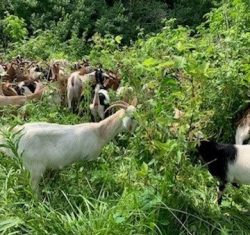
Plant Trimming
With an estimated 2 million trees throughout ComEd’s 11,400 square mile service territory, plant trimming is a constant and crucial component to IVM. Routine vegetation maintenance is conducted to ensure trees are a safe distance from electrical equipment and their growth is guided in directions that reduce the risk of future power interruptions. ComEd also relies on support from customers and business partners to always plant the right tree in the right place.
While trimming trees may seem like a simple process, crews are trained in proper pruning techniques and perform detailed analysis on the vegetation and site conditions before trimming begins. Crews are provided with extensive training to safely operate tools for large scale trimming, including aerial sawing from helicopters and using aerial trimmers, pictured below.
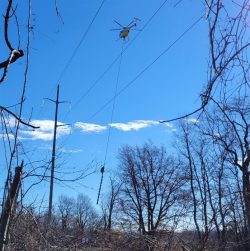
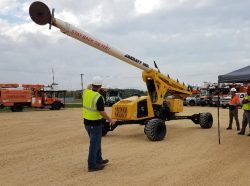
Herbicide Application
Applying herbicides, or chemicals used to kill or prevent growth of unwanted plants, is an effective strategy to control invasive plant species. Licensed Applicators are trained in plant identification and use targeted spot treatment to only apply herbicide on species that are invasive or incompatible with reliable power delivery. Herbicide products used by ComEd are approved by the Environmental Protection Agency. ComEd’s Environmental Services Department conducts further review of these products to maintain high standards of safety, stewardship, and commitment to the environment.
Herbicide substances work by interfering with biological processes such as photosynthesis and nutrient uptake, which leads to the death of invasive plants. Herbicide products are applied manually by teams who patrol power line areas, or by remote drones that drop chemicals from above as seen below. These drones are more efficient than manual application by using less product. By incorporating herbicide to IVM strategy, trimming services are needed less often in each area treated, meaning vegetation management can cover more ground. ComEd uses herbicide treatment after an area has been trimmed for one year. After two years of herbicide application, the land is given time to be studied and rest before the cycle is repeated.
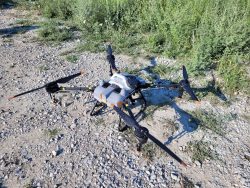
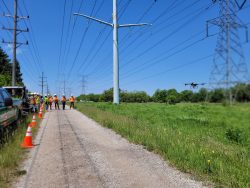
You can thank these high-tech processes (and the goats) for maintaining reliable power delivered to your home. If you require assistance with removing or trimming trees near energy equipment, click here to request tree and vegetation services.
